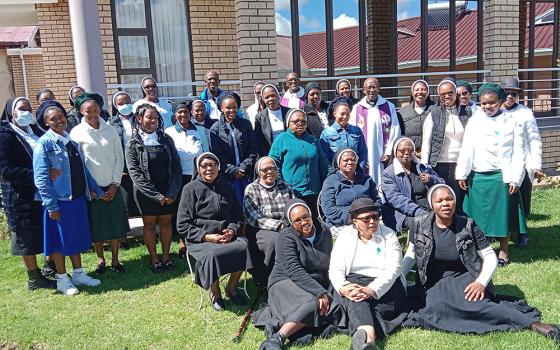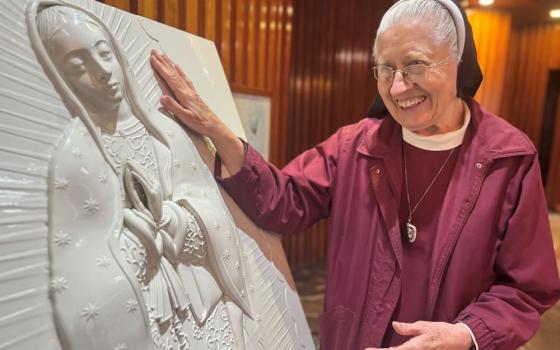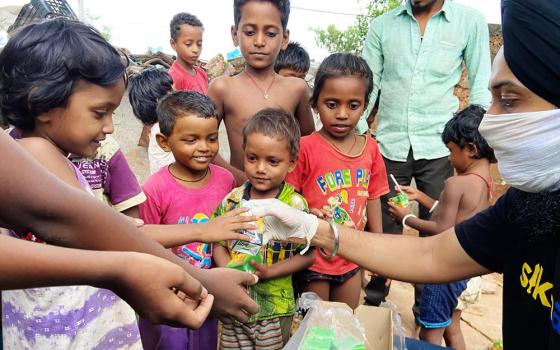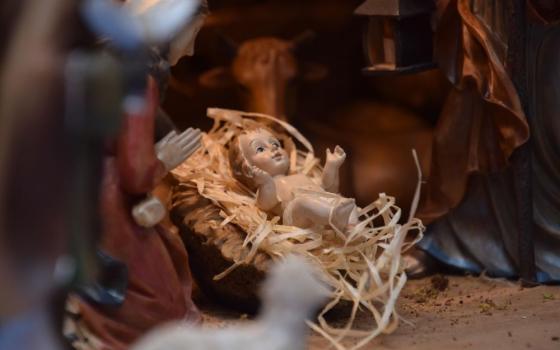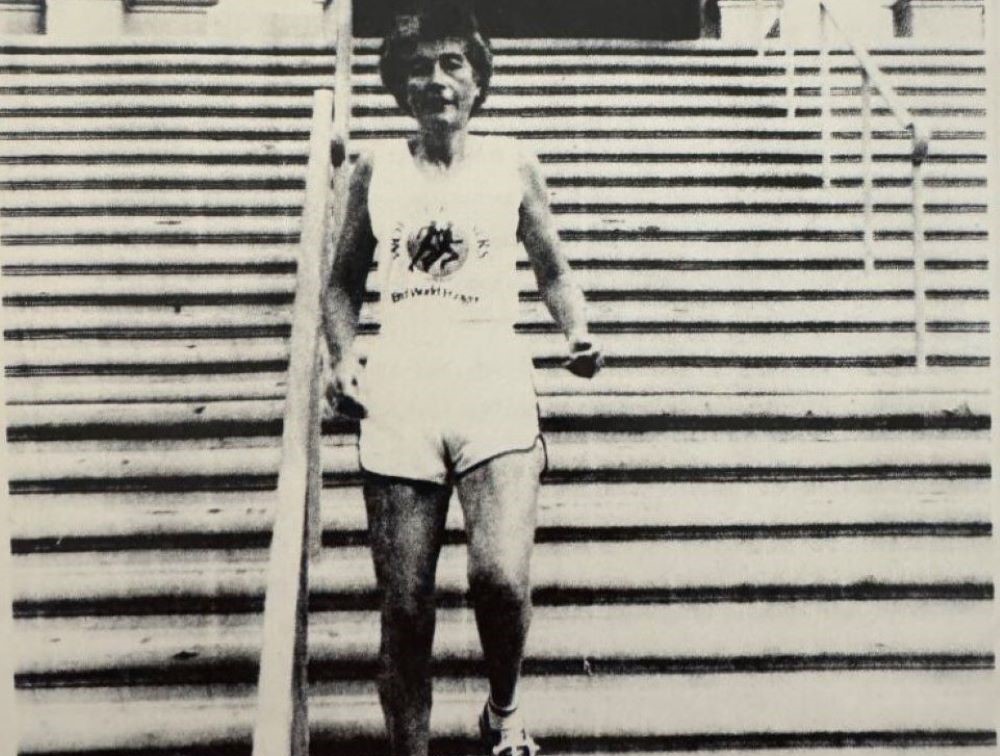
Dominican Sr. Marion Irvine, who set multiple running records, was a media sensation in the 1980s, appearing on national television and on a magazine cover. She died Aug. 30 at age 95. (Courtesy of the Dominican Sisters of San Rafael)

Sr. Marion Irvine died Aug. 30, a loss that somehow almost slipped under the radar.
She was known as "The Running Nun" or "the Flying Nun," appeared on national TV, made the cover of The Runner magazine, was the main subject of a documentary on older athletes and had a Nike sponsorship. The Wall Street Journal's report of her death said she was "a media sensation in the 1980s."
A Dominican Sister of San Rafael, California, Irvine was 95 when she passed away at the order's convent.
The congregation's prioress, Sr. Abby Newton, told Global Sisters Report it would be impossible to sum up Irvine's life in just a few hundred words.
"First of all, you can't write a short write-up about Sr. Marion — it's impossible," Newton said. "If it's short it doesn't come anywhere near doing her justice."
As Runner's World put it:
"From 1981 to 1992, Irvine broke numerous world and American records in age groups from 50 to 64. At her peak, she won five gold medals at the 1989 World Masters Championships. Her 2:51:01 marathon in 1983 was a world 50-54 record, and made her at 54 the oldest athlete ever to qualify for and compete in the U.S. Olympic Trials. Only 12 years earlier it would have been a women's world record."
Why so great at such a late age? Because she didn't start running until she was 48.
Irvine was a school principal in San Rafael, overweight and a smoker when she started running. The Wall Street Journal reported that she started by focusing on doing better the next day. Within two years, she was winning races.
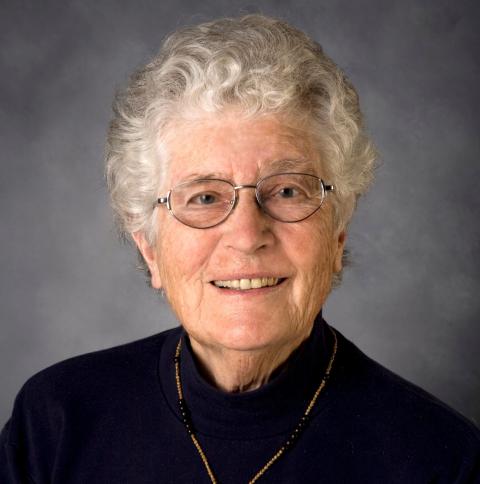
Dominican Sr. Marion Irvine died Aug. 30 at age 95. (Courtesy of the Dominican Sisters of San Rafael)
In her 60s, she finally gave up competing because of injuries, but still kept running, biking, swimming and walking well into her 90s.
In 1999, Irvine became the congregation's justice promoter.
"She vigilantly opposed executions at San Quentin, advocated against human trafficking, protested ICE raids, and worked for nuclear disarmament through civil disobedience — being arrested more than a dozen times at the gates of the Lawrence Livermore Lab," according to her obituary. "She also helped establish the Sisters' Jail Ministry, ensuring incarcerated women were visited weekly."
Runner's World, in a claim that may be impossible to prove but also hard to imagine not being true, says Irvine's 1984 The Runner cover made her "the only nun ever to appear on a magazine cover in singlet and tights."
Newton said her spirit and personality never wavered.
"She never lost her sense of humor," she said. "Ever."
LCWR recognizes addiction recovery ministry
The Leadership Conference of Women Religious' Region 10 recognized two Sisters of Charity of the Blessed Virgin Mary for their pioneering addiction recovery ministry.
At an event Sept. 29 in Dubuque, Iowa, the region — which includes Iowa, Missouri and Nebraska — honored Srs. Mary Gene Kinney and Letitia Marie Close.
Sisters of Charity of the Blessed Virgin Mary president Sr. LaDonna Manternach said the honor was long expected by anybody familiar with Kinney and Close's work in the field.
"Region 10 has been a big supporter of both these women," Manternach said in a statement. "They saw that they deserved to be honored. As the years have gone by, we knew we wanted to get something done before they weren't here to see it."
The pair spearheaded 12-step meetings with members of the community. Soon, other congregations started making inquiries and eventually the national Inter-Congregational Addictions Program was born out of their efforts.
Advertisement
Based in Chicago, Kinney and Close founded the Inter-Congregational Addictions Program in 1979, creating an outreach service for women religious.
"It was about education and the communal aspect of support," Kinney said in the statement. "It was about removing the stigma of alcoholism and educating people about it being a disease, not a choice."
Eventually, the program expanded to include support for addictions other than alcohol, including drugs, food, gambling and overspending. In 1986, when Guest House, a residence for men religious in recovery in Orion, Michigan, wanted to start a program for women religious, Close understood that women approached their addictions and recovery differently than men and created an advisory board to help Guest House as it underwent its transition.
Sisters of Charity of the Blessed Virgin Mary Sr. Luann Brown, an addiction therapist, said women religious often feel alone and hopeless in the disease of addiction.
"One of the great things Mary Gene and Letty have done over the years is to normalize addiction as a disease that people, sisters, everybody in all aspects of society have," Brown said in the statement. "And there is a way to recover."
No one will ever know the extent of Kinney and Close's impact, Brown said.
"There are so many women who have benefited from Letty and Mary Gene's work," she said. "I don't think we can even count how many. They are two beloved women — pilgrims and prophets, passionate, persistent, perceptive, pragmatic, and playful witnesses."

